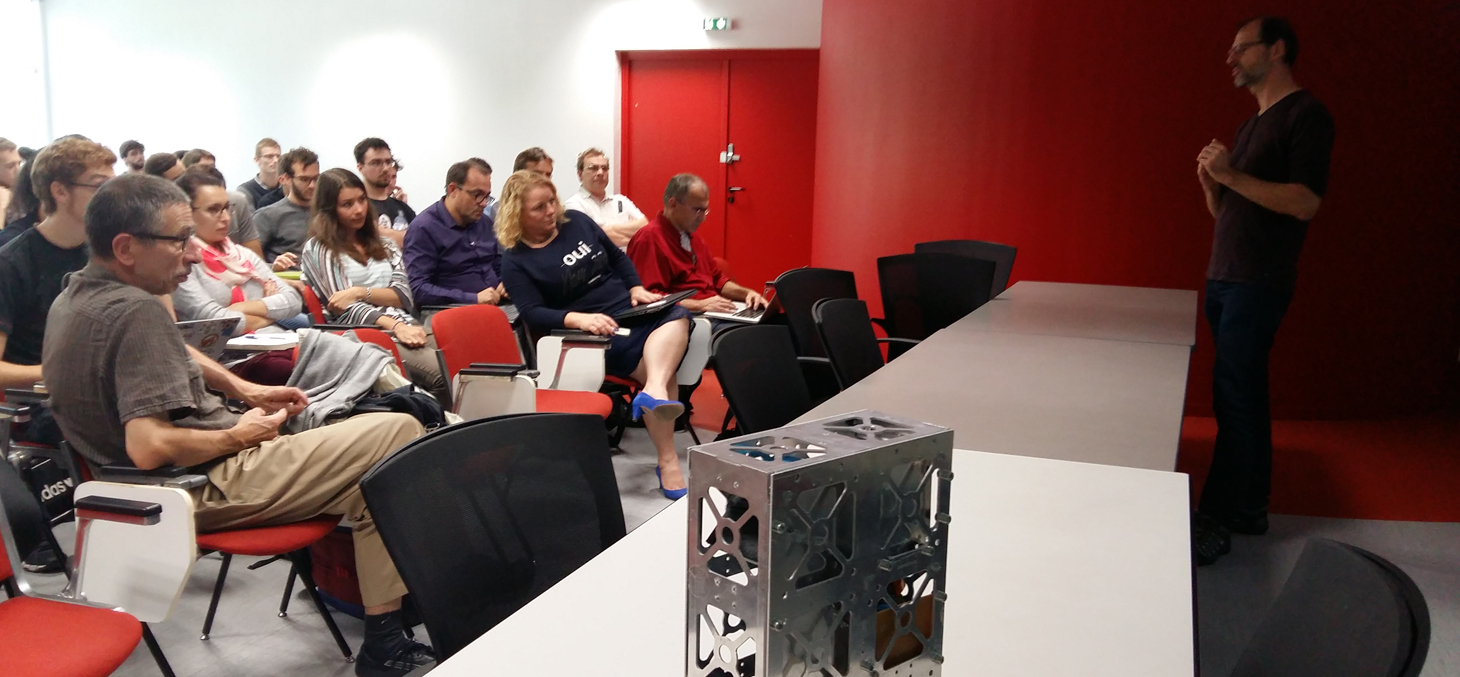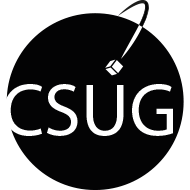GRENOBLE UNIVERSITY SPACE CENTRE IS CELEBRATING THE START OF ITS SECOND SCHOOL YEAR!
Ceremony, News release
On October 4, 2016

Inaugurated in September 2015, Grenoble University Space Centre (CSUG) officially started its second school year on 4 October, welcoming fifty or so students eager to jump into designing nanosatellites. While the ATISE project initiated last year continues to develop, a second project called NANOBOB will be starting from October 2016.
The CSUG specialises in nanosatellite design. It welcomes students from the Université Grenoble Alpes and Grenoble INP, hailing from a wide range of fields and levels: optics, mechanics, electronics, physics, management and communication; technicians, Bachelor’s and Master’s students and engineers. Seven laboratories are part of the CSUG’s projects, and all of the people involved work with the students to develop an innovative approach to teaching based on interdisciplinarity.
Last year, fifty students started work on designing a nanosatellite, weighing just a few kilos and intended to study the Northern Lights. This project, named ATISE, is led in conjunction with Toulouse University Space Centre. The latter is building the platform and the flight instruments while Grenoble’s students are responsible for the central instrumentation on the nanosatellite. The launch is set for 2020.
For this new school year, another fifty students are expected to continue the project. Others will be joining them from October 2016 to launch a second programme: NANOBOB. This time, they will be developing a quantum communication satellite capable of producing tamper-proof encrypted data, thus securing transmissions. The stakes for this field of science are high, in terms of both economics and strategy. The NANOBOB project will begin with a preliminary definition and feasibility study phase. The satellite will be built entirely by the CSUG, in conjunction with IQOQI and the Austrian Academy of Sciences. Its launch is also set for 2020.
The cost of nanosatellites like these is estimated in the range of €2 million to €3 million. The CSUG receives funding from the universities and the government, but it also works closely with industrial sponsors for nanotechnology like Air Liquide Advanced Technologies, E2V and ST Microelectronics.
Last year, fifty students started work on designing a nanosatellite, weighing just a few kilos and intended to study the Northern Lights. This project, named ATISE, is led in conjunction with Toulouse University Space Centre. The latter is building the platform and the flight instruments while Grenoble’s students are responsible for the central instrumentation on the nanosatellite. The launch is set for 2020.
For this new school year, another fifty students are expected to continue the project. Others will be joining them from October 2016 to launch a second programme: NANOBOB. This time, they will be developing a quantum communication satellite capable of producing tamper-proof encrypted data, thus securing transmissions. The stakes for this field of science are high, in terms of both economics and strategy. The NANOBOB project will begin with a preliminary definition and feasibility study phase. The satellite will be built entirely by the CSUG, in conjunction with IQOQI and the Austrian Academy of Sciences. Its launch is also set for 2020.
The cost of nanosatellites like these is estimated in the range of €2 million to €3 million. The CSUG receives funding from the universities and the government, but it also works closely with industrial sponsors for nanotechnology like Air Liquide Advanced Technologies, E2V and ST Microelectronics.
Published on December 13, 2017
Updated on January 10, 2018
Updated on January 10, 2018

